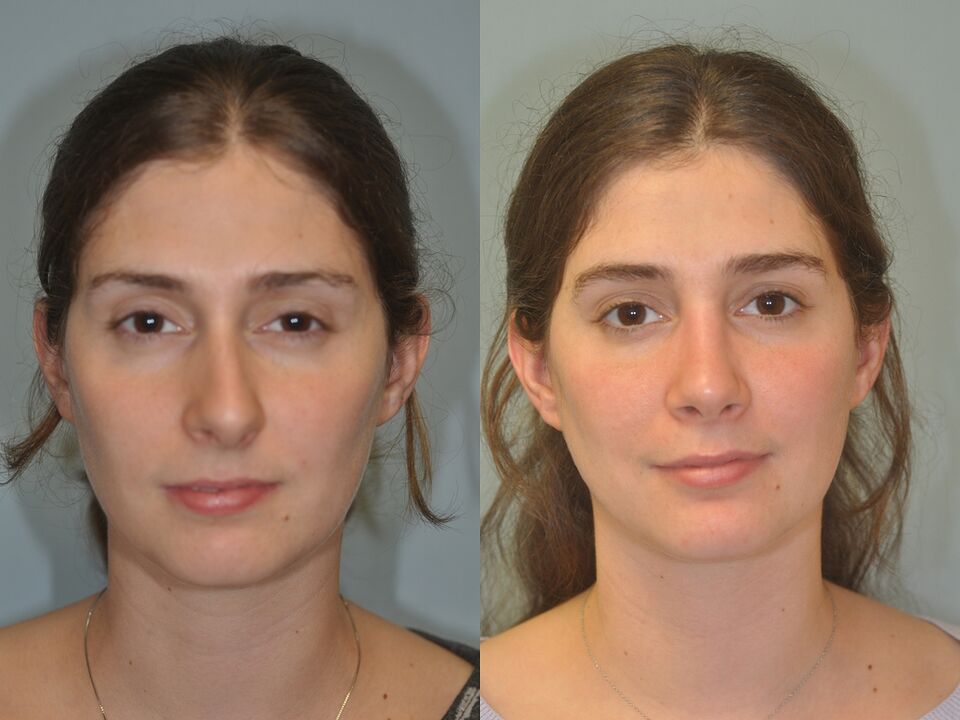
Rhinoplasty (formed by two other Greek words in the meaning of "nose" + "plastic", so it is literally translated as "plastic nose") is a portion of plastic surgery, which is engaged in congenital correction (obtained in the embryonogenesis phase) and the deformities of the nasal.Simply put, this is a plastic surgery to correct external and internal nasal defects.Distinguish between open rhinoplasty, closed and non -surgical.In most cases, aesthetic and functional defects are eliminated surgical.
Initially, the correction was carried out only with regard to injuries, serious illnesses and apparent congenital defects.Later, plastic surgery began to take place, more often, according to aesthetic indications, in order to change the appearance of the nose.For example, remove the bump, reduce the tip, raise the nose bridge, reduce your noses and so on. A small story. For the first time, surgeons in the ancient world perform rhinoplasty. It was mentioned in the ancient manuscript of "Ayurveda" dating from OK.1000 BC This document captures most of the facts about the drug of antiquity.The restoration of facial units was required by wars and people who were crippled in battle during the execution of the judicial sentence.At this time, the transplant began its story.As a correction material, the skin of the cheeks or skin on the forehead was taken.Indian technology over time developed so that in the Middle Ages European doctors, owning it, have successfully operated on patients.
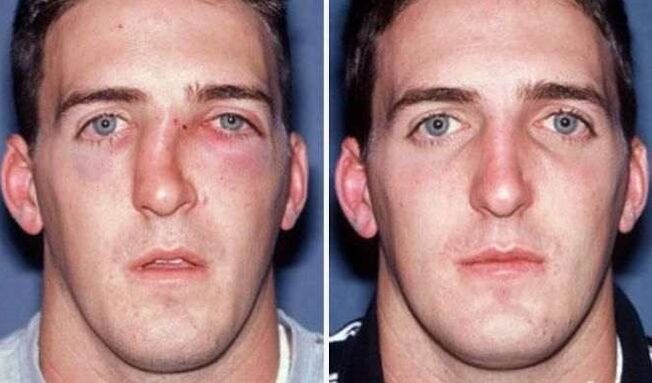
Rhinoplasty
Rhinoplasty is done according to medical and aesthetic indications.In other words, a people just don't like what the nose looks like.It can be with a bump or curve, too large or small, wide or narrow, embedded or long, with large or asymmetrical noses.And it happens that a person's nose is distorted from birth or because of the stroke (while often it cannot breathe and surgery is required to restore nasal breathing).There are frequent cases when surgery is required to correct the appearance defects after the first unsuccessful plasticity (this is considered the most difficult surgical intervention).The surgery is allowed only to persons over 18 years old (if there are no urgent medical indications).This is due to the fact that bone tissue forms up to the age of eighteen, and the cartilage is even up to twenty.This is why the most suitable age for rhinoplasty from 20 - 35 years.Below is a description of the most common problems that men and women turn to Rhino surgeons.
Nose with a bump
The essence of the problem: there is a small lump on the back of the nose, due to which the nose looks more massive, and the face is wild and unhappy.The reason: the defect may be congenital, may appear after an injury, or may be the result of a previously unsuccessful correction.Method of removal: In most cases, in plastic surgery, the lump is removed with a closed or open method under general anesthesia.If the back of the nose is too wide, it is necessary to do rhinoplasty with osteotomy (rear bone approach)
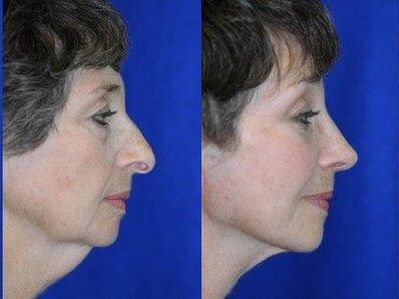
A wide nose spine
The essence of the problem: a person has a very wide nose, which makes the face massive and rude.Reasons: a defect can occur after an injury, be congenital or become the result of an unsuccessful removal of a Gunger.Solution Method: Open correction with osteotomy under general anesthesia.The essence of this technique is that part of the bone at the back is removed, and then the sides are joined.
Nose of the crooked nose
The essence of the problem: the back of the nose is asymmetrical.Because of bending, often a person cannot breathe at all.This problem refers to functional indications for surgical correction.How a defect appears: in most cases, this is the result of a fracture.Although nasal separation is curved as a result of the intense growth of skull bones during growth.Is it possible to fix your nose? In most cases, an operation to equalize the partition (septoplasty) is undergoing a closed method under local anesthesia.The essence of the operation is shown in the diagram below.If this is not enough, in such cases they are directed to rhinoseptoplasty (when the compartment correction is combined with the elimination of other nasal shape defects).In cases where the damage is quite serious, they use reconstructive plastics (more serious surgical intervention, which is often performed in several stages), this part of plastic surgery studies Nasal restoration methods after serious damage and in cases of complete absence.The surgeon's task in this case is to restore the integrity of the bone cherry base and the skin.
The shape of the nasal saddle
The essence of the problem: the nose is very low.Because of what, the shape of the nose resembles a saddle in the profile.Reason: The defect can be congenital, it can appear as a result of an injury when part of the bone or cartilage was damaged.How can you change the situation? The correct form is returned by transplanting a cost cartilage, cartilage from the auricle (on the outside of the ear) or implating a synthetic implant.
Nose

The essence of the problem. Very large (long or wide) nose makes the face disproportionate.Most often, in such cases, the yeast is very thick.Reason: The defect is most often innate. How do they solve the problem? The nature of the surgical intervention depends on the cause (in some cases it is necessary to reduce the tip of the tip, in others the nasal wings are reduced, but it is necessary to remove the bumps).Before deciding that it is possible to make plastic surgeons often turn to 3D computer modeling.This allows you to see even before surgery what the face will look like after the procedure.
The form of the problem of the nose tip
The essence of the problem: the exact percentages of the face are violated due to the wrong shape of the nose.For example, it may be:
- Tight
- Vast
- Round (nose with potatoes or bulbous)
- Sitting (crochet)
- Raised (Kurting)
- Bifurcated
How do they solve the problem? The course of surgery is intended depending on the type of problem.
- To reduce the wide tip, it is enough to connect the large cartilage cube, and in others it is also necessary to trim a piece of cartilage tissue.
- A round top with meat more often has to remove part of the cartilage, followed by the approach of the domes, also often reduces the wings during surgery.
- The nasal bifurcated tip should install a transplant from the patient's cartilage fabric taken to the area of the ear or ribs, or from the synthetic material.
- The yeast may seem very narrow due to disorders associated with the loss of stiffness of the lateral legs of the cartilage.They are strengthened, also using transplants.
- During the correction of the seated nose, the surgeon removes part of the cartilage and enhances it by sewing, adjusting it in a new position.
- Another operation of the operation means strengthening the nasal columla to provide good support at the top.
- There is a third method associated with the shortening of a portion of the inner muscle, after which the tip is pulled up
- Kournostability is also eliminated in several ways that include installing their transplants or synthetic at the top of the tip or nasal bridge.
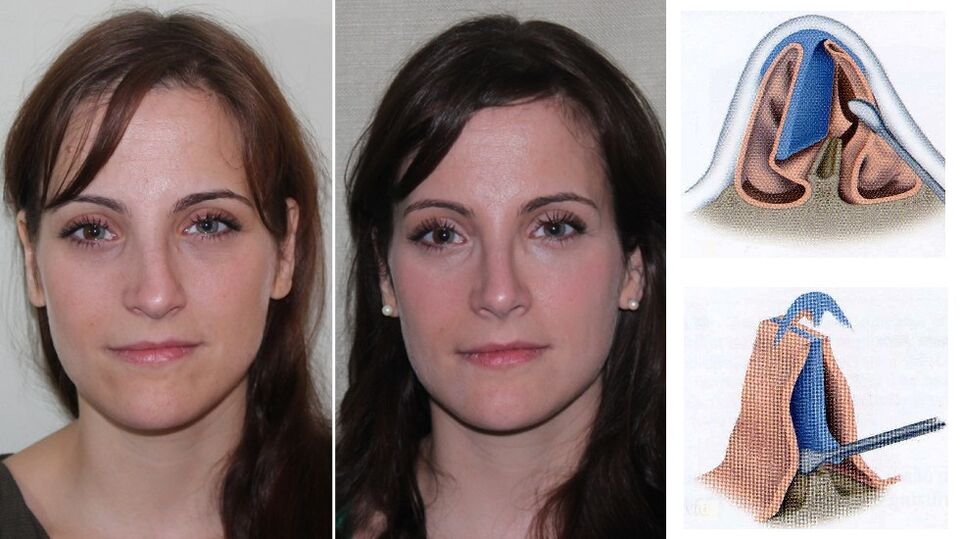
Large or different nose
The essence of the problem: the unprofitable nasal size (too small or too large) or the significant asymmetry can disrupt the harmony and worsen the appearance of the face.How to eliminate the defect? The course of surgery depends on the source of the problem.They can sew the nose wings, may be required to strengthen the pension cartilage domes, and in some cases it is enough to align the septum of the nose.It happens that it is necessary to rise or reduce the long nasal tip
Contraindications to rhinoplasty
To absolute contraindications in which rhinoplasty should not be done in any case:
- Diabetes I, Type II
- Coronary heart disease and other diseases serious cardiovascular disease in which general anesthesia is contraindicated
- Meningitis, tuberculosis, gonorrhea, brucellosis and other serious viral infectious diseases
- System Diseases: Red Lupus, HIV, Lepa and others.
- An allergic reaction to anesthesia components.
- Chronic diseases: liver cirrhosis, hepatitis, etc.
- Cancer
- Bronchial asthma
- Blood coagulation problems
- Mental illness
Relative contraindications (rhinoplasty can be done if the disease is cured) related:
- Age up to 18 years (correction is acceptable only in the most extreme cases)
- Irritation of inflammatory diseases (sore throat, frontal, sinusitis, otitis media)
- Ars, Sars
- Skin diseases
- Age after 50 years (surgery is done if there is no chronic disease associated with absolute contraindications)
- Pregnancy, lactation, menstruation
How rhinoplasty passes
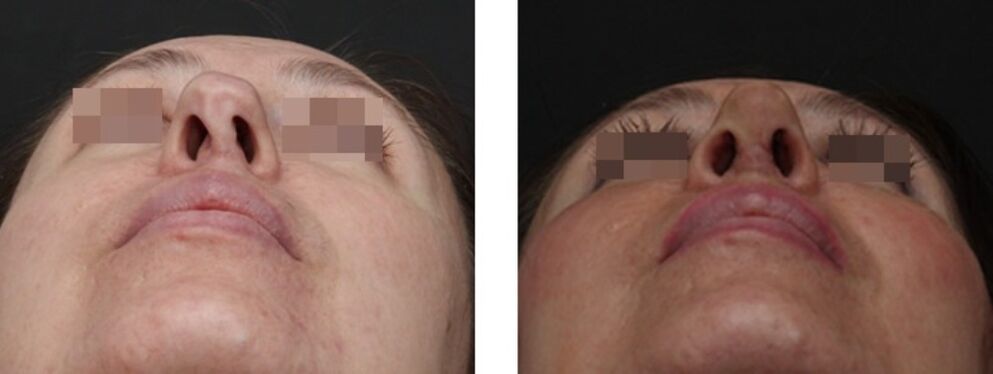
Rhinoplasty is only under general anesthesia.The duration of the procedure depends on the complexity of the surgical intervention and varies from 30 minutes to 2 hours.During the first consultation, the doctor offers to do 3D modeling in order to achieve full understanding with the patient.This helps to show a person what the end result can be expected.When he imagines it results in the end, it is easier to make you a conscious choice.Before surgery, the patient must pass a general and biochemical blood test and a general urine test.It will also be necessary to do a blood test for HIV and a blood test analysis for prothrombin.It will be necessary to do an electrocardiogram and take an inspection with the profile doctors, if necessary.Patient preparation in the pre -surgery period includes the following recommendations:
Two weeks before surgery:
- Refuse to drink alcohol (particularly sparkling)
- Don't take blood thinning medicines
- Don't make the sun bath
- Without smoking
One week before the procedure:
- Earn all the necessary medicines
- Minimize the use of cosmetics
- Buy contact lenses to replace glasses (for people with poor vision)
10 hours before surgery:
- Don't drink anything (or drink the minimum amount of liquid)
- Do not use perfume and cosmetics
- Prepare clothes that do not need to be removed over your head
- Remove jewelry
Rehabilitation after rhinoplasty
Complete tissue restoration after rhinoplasty occurs one year after surgery.To speed up the tissue healing process and avoid the appearance of undesirable consequences, it is extremely important to strictly observe the doctor's recommendations regarding post -operative behavior.The first few days after surgery, the patient is embarrassing due to the fact that he should constantly wear gypsum and endure tampons on the nose.This means that you can only breathe with your nose, your mouth often dries.The temperature can rise.I want to drink.It is difficult to brush and brush your teeth.Remove gypsum and remove tours from nose earlier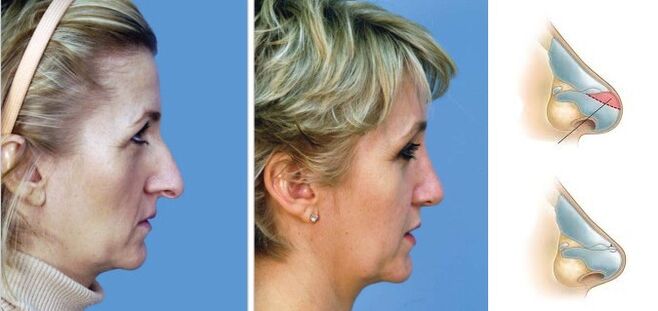 It is impossible to.This can lead to undesirable deformities, an increase in swelling and problems with tissue healing.
It is impossible to.This can lead to undesirable deformities, an increase in swelling and problems with tissue healing.
The first five days of edema will intensify, and then begin to go down.To curb swelling, it is recommended to make cold compresses the first day.After removing gypsum dress for about two weeks, people will continue to suffer discomfort caused by nasal edema.Perhaps some loss of sensitivity in the field of surgical intervention.Bruises are still visible.At this time, breathing with your nose is already easier. During rehabilitation, the first week, surgeon rhinoplasts recommend adhering to the following limitations:
- You cannot eat a lot of salty, spicy, acidic and other, simple food.
- You can't bend your head down, take a bath, lift weights (including taking a baby or pets harder than 5 kg.) And charging.
- You will only need to sleep on your back, on a high pillow.
A person will be able to go to work two weeks after surgery, although it will be necessary to avoid heavy physical work.Therefore, it is best to plan a break for this time in order to provide full rest and rest for speed recovery.
Within two months after rhinoplasty:
- It is necessary to rinse the nasal cavity regularly
- You cannot undergo serious physical exercises, play sports or go to the pool
- You can't drink alcohol
- You can't smoke
- Lowering or eliminating the use of coffee
- It is forbidden to visit a bath or sauna
- It is necessary to avoid direct sunlight on the face
- You can't wear glasses.They affect the shape of nasal bridges, so you have to wait until the bone is fully healed.
Possible complications after rhinoplasty
It is considered a normal condition if immediately after surgery there are bruises around the eyes and swelling.They are a direct consequence of damage during the operation of small vessels.After nearly two weeks, primary and bruise edema should already go down.
Early complications include the following problems:
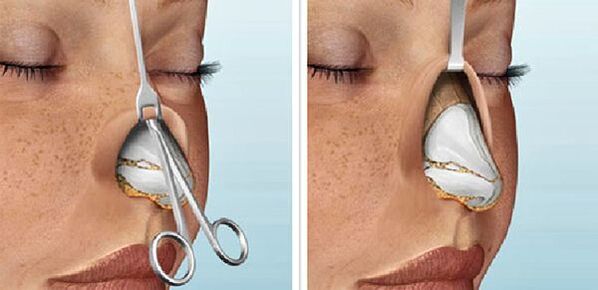
- bloodshed
- Hematoma
- Edema too strong
- Necrosis of the clothes
- Wounded infection
- The discovery of the seams
- Numbness
If these problems arise, it is necessary to turn to your surgeon who follow in a timely manner and start treatment on time and prevent their further development.
Late complications include:
- Perhaps the look of bone corn
- Keloid wound formation
- The thought of the nose
- Nasal tip bifurcation
- The shape of the nasal saddle
- Curvature of the back of the nose
- asymmetry
- The appearance of a nose -nose
- Drilling
- Hard breathing
Most of the complications listed above can be eliminated using a repeated operation.Some of them arise due to the surgeon's mistakes, some due to the fault of the patient's improper behavior during the recovery period, and the appearance of some is explained by the different characteristics of the human body.




















